The following gallery contains some of the more spectacular pictures of things that lie far away from our planet, provided by people who study the vast expanses of deep space. Browse it and see what lurks beyond our sky.
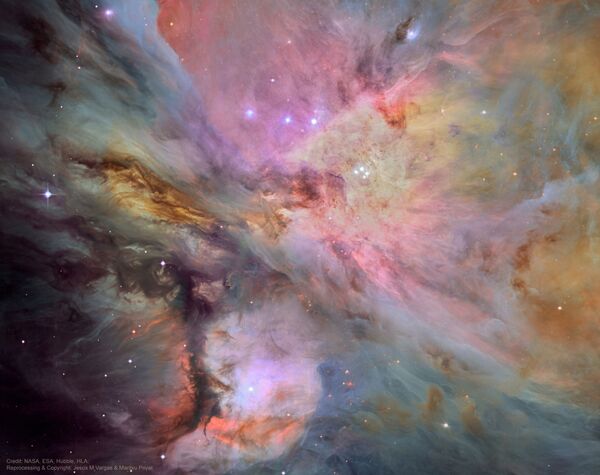
1/30
© Photo : NASA, ESA, Hubble, HLA; Jesús M.Vargas & Maritxu Poyal
The Great Nebula in Orion, an immense, nearby starbirth region, is probably the most famous of all astronomical nebulae. Here, filaments of dark dust and glowing gas surround hot young stars at the edge of an immense interstellar molecular cloud only 1,500 light-years away. In the featured deep image shown in assigned colors, part of the nebula's center is shown as taken by the Hubble Space Telescope. The Great Nebula in Orion can be found with the unaided eye near the easily identifiable belt of three stars in the constellation Orion. In addition to housing a bright open cluster of stars known as the Trapezium, the Orion Nebula contains many stellar nurseries. These nurseries contain much hydrogen gas, hot young stars, proplyds, and stellar jets spewing material at high speeds. Also known as M42, the Orion Nebula spans about 40 light years and is located in the same spiral arm of our Galaxy as the Sun.
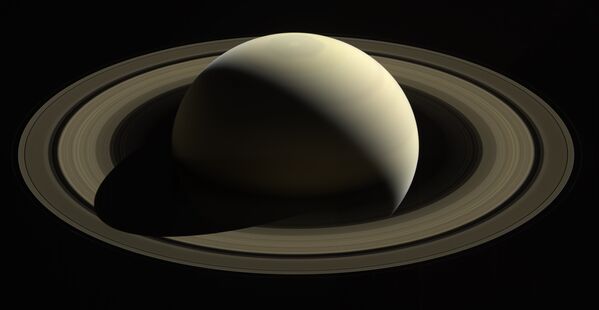
2/30
© Photo : NASA, JPL-Caltech/Space Science Institute
Photo of Saturn taken by Cassini spacecraft.

Russian spacecraft Soyuz and Progress docked with ISS.

NASA's Juno Mission Provides New Data to Astronomers.
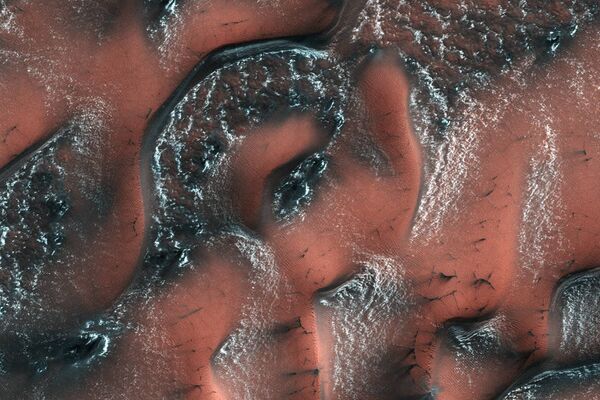
5/30
© Photo : JPL/University of Arizona
Ice-covered dunes on Mars.

The Crab Nebula, located 6,500 years from Earth, was formed by a supernova explosion witnessed by astronomers in 1054.
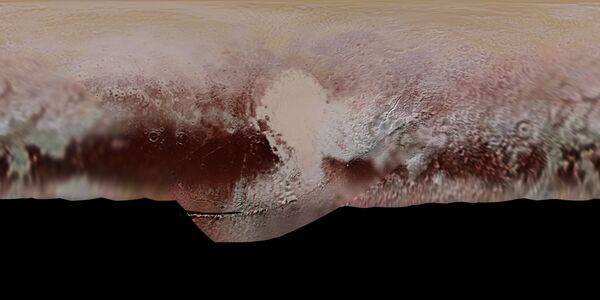
7/30
© Photo : NASA/JHUAPL/SwRI
Colored map of Pluto compiled by NASA.
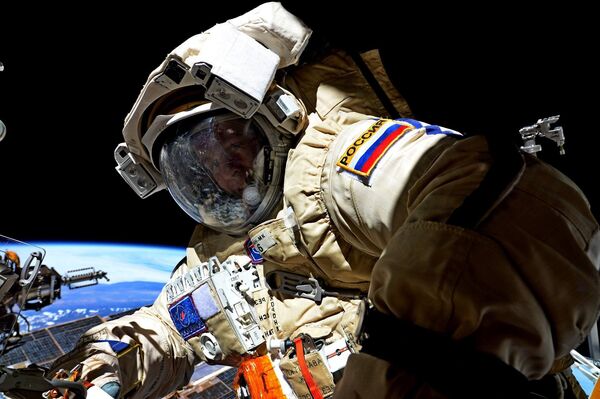
8/30
© Photo : NASA/Jack Fischer
Russian cosmonaut Sergey Ryazansky performing an EVA.
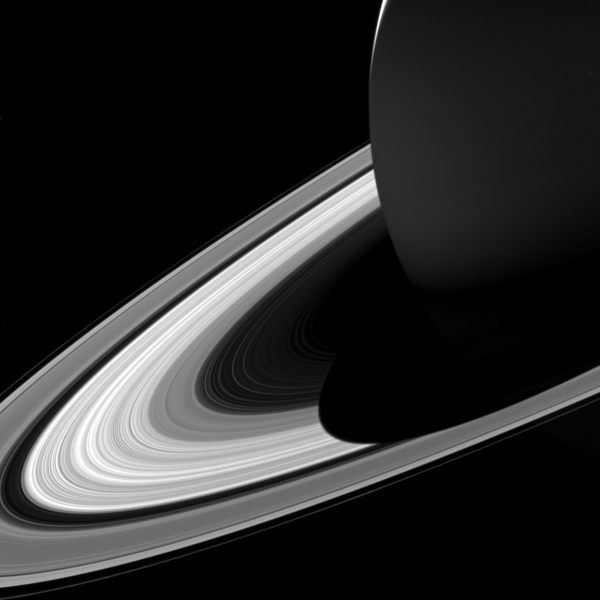
A breathtaking new view of Saturn has revealed an up-close look at the planet's rings.

10/30
© Photo : NASA/JPL-Caltech/Space Science Institute
Images of Saturn's moon Titan, taken by Cassini spacecraft.
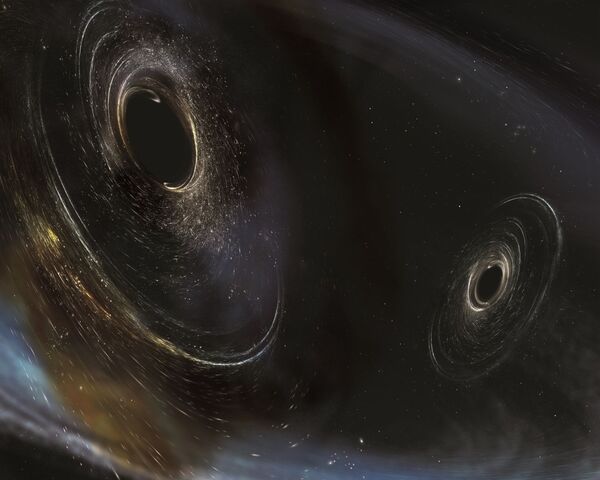
11/30
© Photo : LIGO/Caltech/MIT/Sonoma State (Aurore Simonnet)
Here's an artist's depiction of black holes located 3 billion light years from Earth.
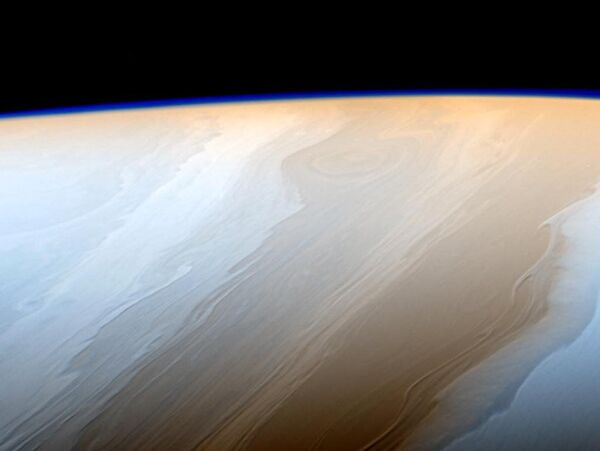
The clouds of Saturn.
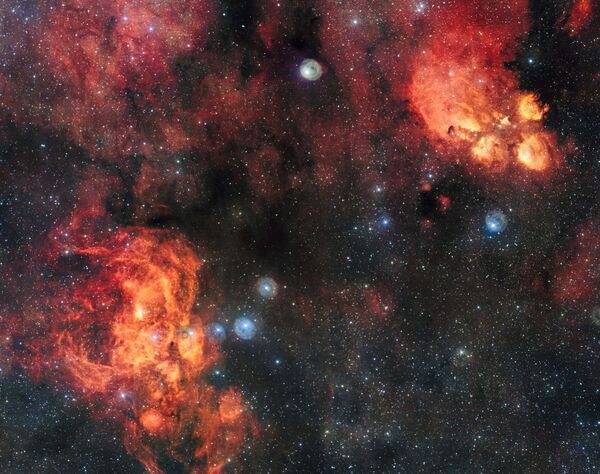
This spectacular image from the VLT Survey Telescope shows the Cat’s Paw Nebula (NGC 6334, upper right) and the Lobster Nebula (NGC 6357, lower left).
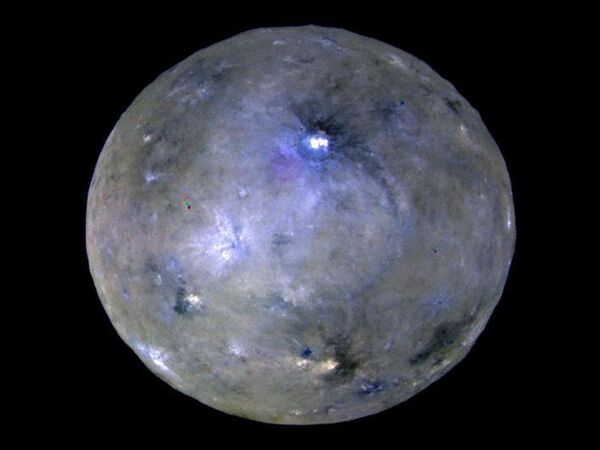
This image was taken by NASA's Dawn spacecraft of dwarf planet Ceres on Feb. 19 from a distance of nearly 29,000 miles (46,000 kilometers). It shows that the brightest spot on Ceres has a dimmer companion, which apparently lies in the same basin.
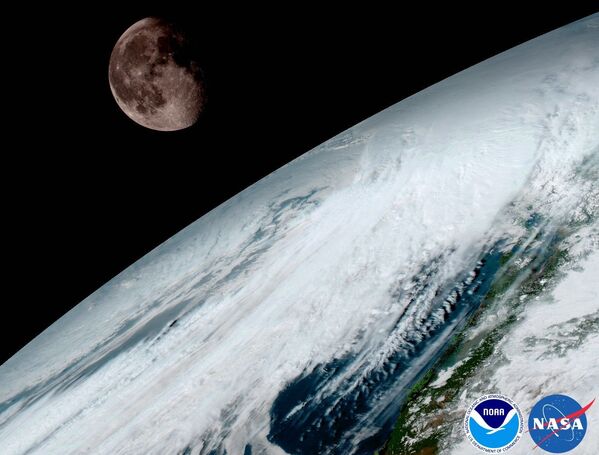
15/30
© Photo : NOAA/NASA
One of the first photos taken by the GOES-16 probe.
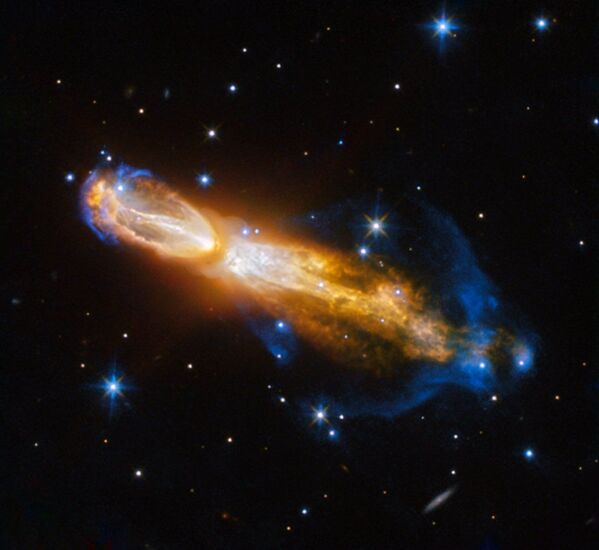
16/30
© Photo : ESA / Hubble & NASA, Acknowledgement: Judy Schmidt
The Calabash Nebula, pictured here — which has the technical name OH 231.8+04.2 — is a spectacular example of the death of a low-mass star like the Sun. This image taken by the NASA/ESA Hubble Space Telescope shows the star going through a rapid transformation from a red giant to a planetary nebula, during which it blows its outer layers of gas and dust out into the surrounding space. The recently ejected material is spat out in opposite directions with immense speed — the gas shown in yellow is moving close to a million kilometres an hour. Astronomers rarely capture a star in this phase of its evolution because it occurs within the blink of an eye — in astronomical terms. Over the next thousand years the nebula is expected to evolve into a fully fledged planetary nebula. The nebula is also known as the Rotten Egg Nebula because it contains a lot of sulphur, an element that, when combined with other elements, smells like a rotten egg — but luckily, it resides over 5000 light-years away in the constellation of Puppis (The Poop deck).
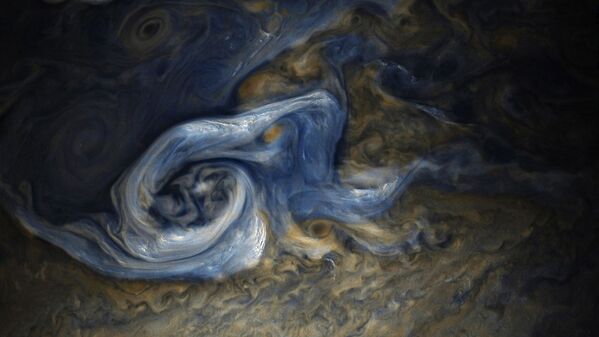
This color-enhanced image of a massive, raging storm in Jupiter's northern hemisphere was captured by NASA's Juno spacecraft during its ninth close flyby of the gas giant planet.
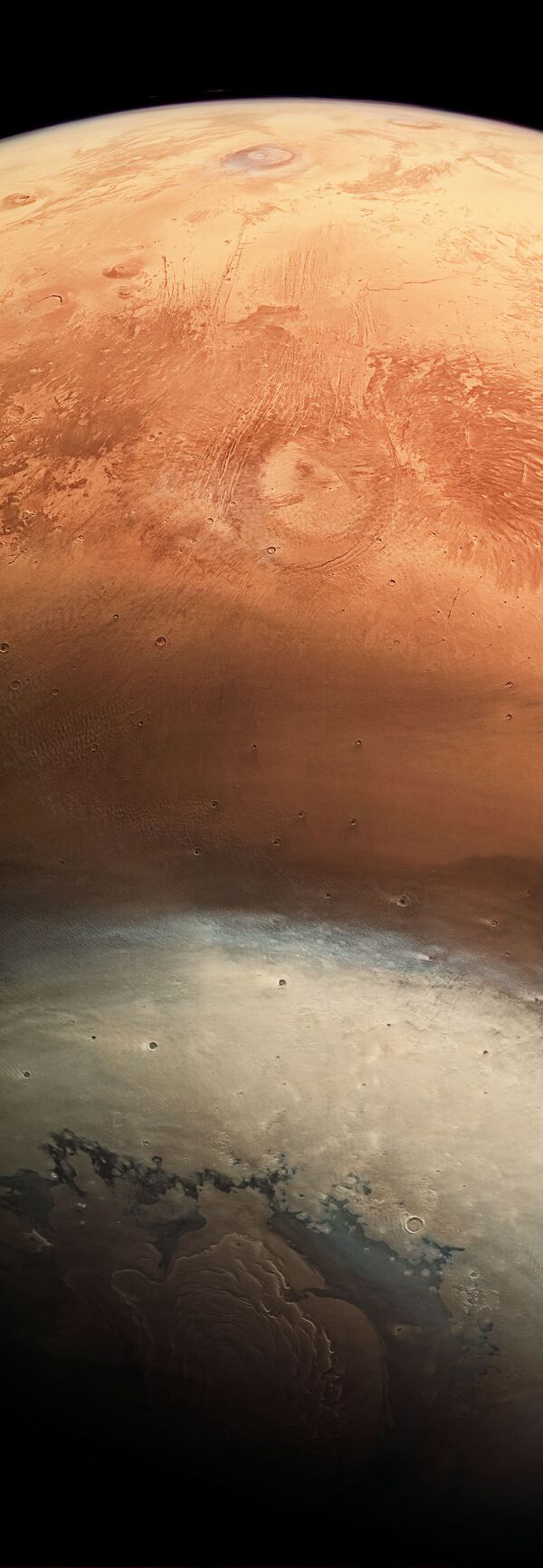
This stunning image swath was taken by ESA’s Mars Express during camera calibration as the spacecraft flew over the north pole (bottom) towards the equator (top).
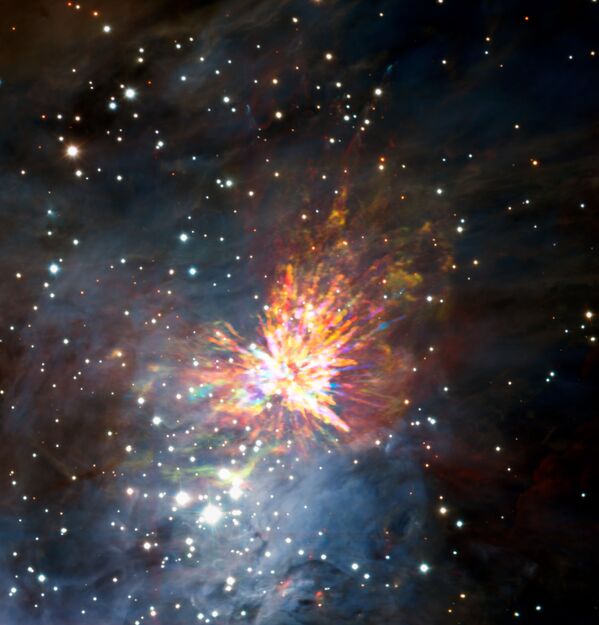
19/30
© Photo : ALMA (ESO/NAOJ/NRAO), J. Bally/H. Drass et al.ALMA (ESO/NAOJ/NRAO), J. Bally/H. Drass et al.
Stellar explosions are most often associated with supernovae, the spectacular deaths of stars. But new ALMA observations of the Orion Nebula complex provide insights into explosions at the other end of the stellar life cycle, star birth. Astronomers captured these dramatic images of the remains of a 500-year-old explosion as they explored the firework-like debris from the birth of a group of massive stars, demonstrating that star formation can be a violent and explosive process too. The background image includes optical and near-infrared imaging from both the Gemini South and ESO Very Large Telescope. The famous Trapezium Cluster of hot young stars appears towards the bottom of this image. The ALMA data do not cover the full image shown here.
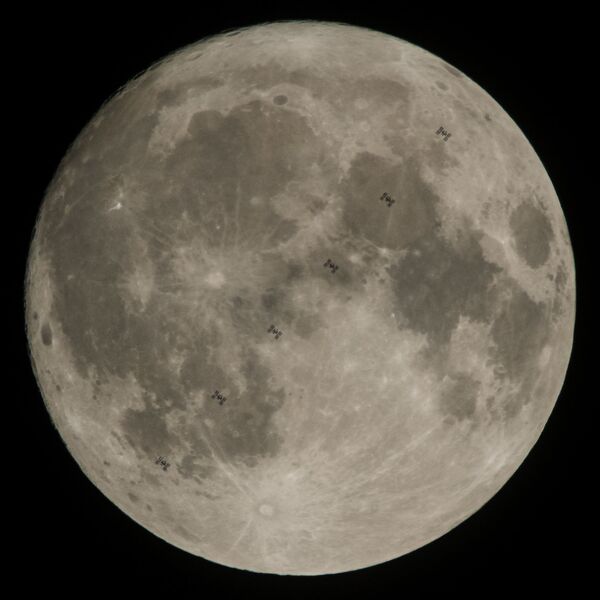
Транзит Международной космической станции по диску Луны. 2 декабря 2017

The photo of Caroline Islands snapped from aboard the ISS by Russian cosmonaut Sergey Ryazansky.
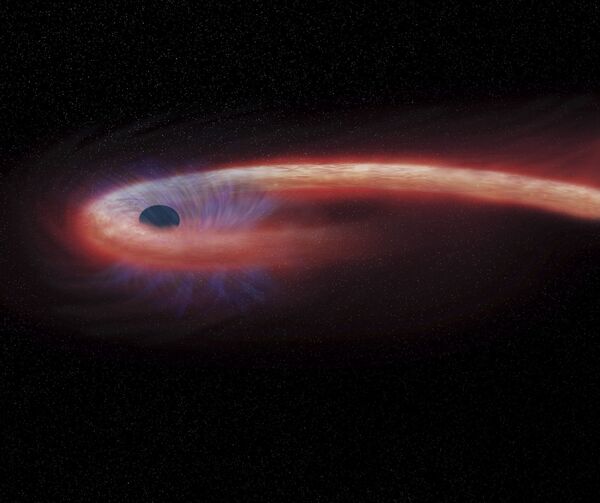
22/30
© AP Photo / NASA/Chandra X-ray Observatory/M.Weiss
This artist rendering provided by NASA shows a star being swallowed by a black hole, and emitting an X-ray flare, shown in red, in the process.
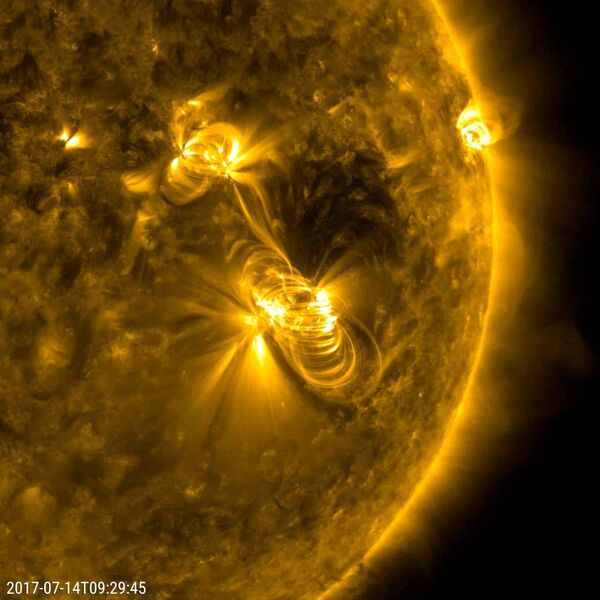
23/30
© Photo : GSFC/Solar Dynamics Observatory
Solar flare.
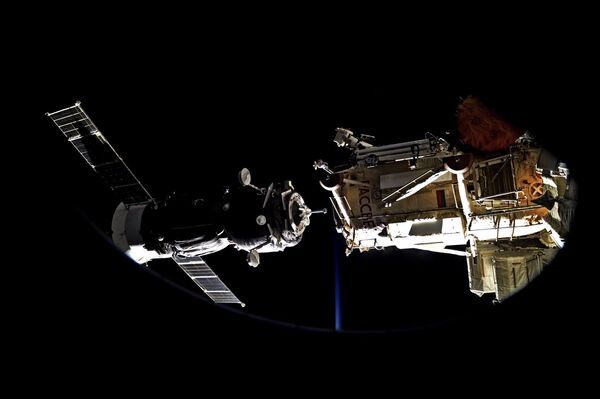
24/30
© Photo : Roskosmos / Fedor Yurchikhin
Soyuz spacecraft docks with ISS.
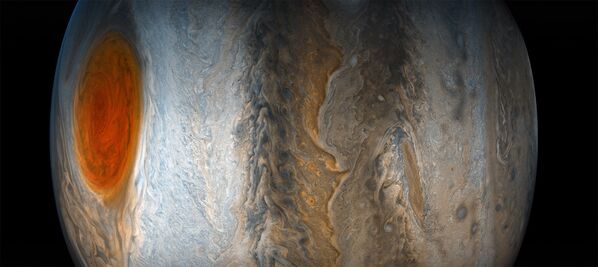
25/30
© Photo : /JPL-Caltech/SwRI/MSSS/Gerald Eichstädt /Seán Doran
The view of Jupiter.
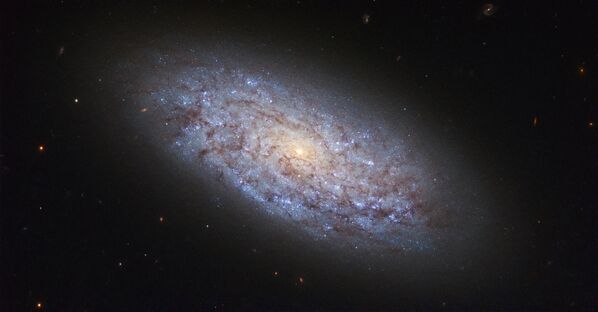
26/30
© Photo : ESA/Hubble & NASA
The NGC 5949 dwarf spiral galaxy in Draco constellation.

Saturnian Hexagon Collage. This view from NASA's Cassini spacecraft was obtained about half a day before its first close pass by the outer edges of Saturn's main rings during its penultimate mission phase.

The photo of Richat Structure, also known as the Eye of Sahara, snapped from aboard the ISS.
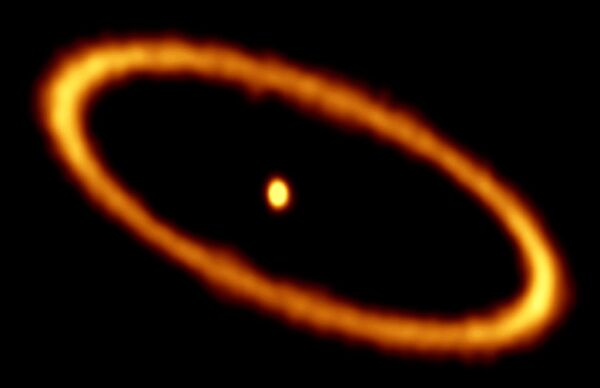
29/30
© Photo : ALMA (ESO/NAOJ/NRAO)/L. Matrà/M. A. MacGregor
Fomalhaut, one of the brightest stars in the sky, surrounded by a fiery ring of gas and dust.
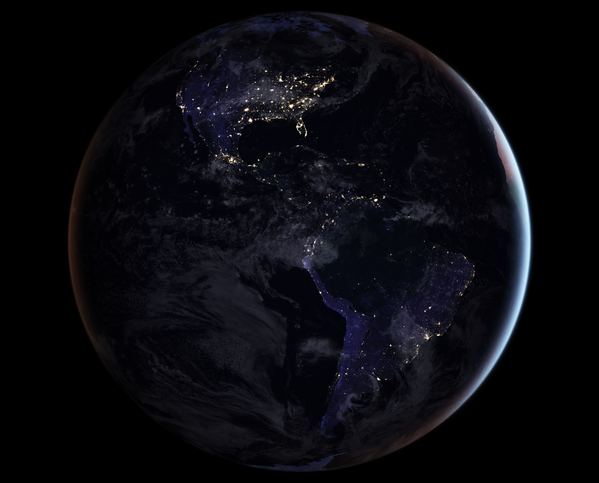
A view of one hemisphere of Earth at night.

